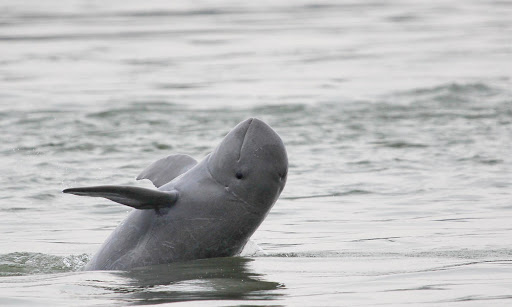New Delhi: A research project by the Indian Institute of Technology (IIT) Madras has come as a huge boost for Chilika lake. The project has helped Asia’s largest brackish water body, in tripling the population of the Irrawaddy dolphins.
Minimum impact on ecosystem
The searchers conducted geotechnical, hydraulic and satellite imagery studies. They then developed a dredging methodology with minimum impact on the lake ecosystem.
The process of dredging consists of the excavation (loosening or dislodging) of the material from the bottom. Then the removal of the loosened material to the dredge vessel follows.
Benefit for fishermen
The intervention by the premiere institute also benefitted the over 200,000 fishermen living in 132 villages. It resulted in a seven-fold increase of fish catch. The project facilitated tourists to co-exist with the lake’s ecosystem with minimal disturbance to the environment.
Statement issued by IIT, Madras
“Chilika Lagoon is over 4,000 years old and spread over the Puri, Khurda and Ganjam districts of Odisha. The highly productive ecosystem of the lake supports the livelihood for fishermen. It also acts as drainage for Mahanadi river basin,” R Sundaravadivelu, professor at Department of Ocean Engineering, IIT Madras said.
“The lake was in a degraded condition and included in the threatened list by Ramsar Convention in 1993. This warranted urgent action for restoration of the lake. The geotechnical, hydraulic and satellite imagery studies showed the spit of Chilika is constantly changing. The sand bar has been widening.
Also the position of the mouth was constantly shifting, moving generally towards the northeast. The mouth was described as being about 1.5 km wide in 1780. However, it had decreased to half within forty years in 1820. The images also showed the Chilika lake mouth located originally near Sipakuda in 1800 has gradually shifted. In the last 200 years it has moved towards the northern side to Arkhakuda,” added Sundaravadivelu.
Methodology of dredging
The IIT Madras team developed the dredging methodology identifying the location of dredging. It used a suitable dredger with minimum impact on the ecosystem.
Benefits of dredging
“Based on the outcome of this successful hydrological intervention, the flood inundation and freshwater weeds are reduced. The hydrological intervention restored the lake ecosystem and ameliorated the biodiversity. The fish production increased seven-fold and the population of highly threatened Irrawaddy dolphin increased,” Sundaravadivelu informed.
“The enhancement of fishery resources and the increase of population of Irrawaddy dolphin promoted ecotourism. This has also immensely benefitted the local fishers,” he added.
Cost of project
The entire project has cost Rs 10 crore. By opening the mouth and other related works in six months, the lake is now off the threatened list (Montreux record).
PNN & Agencies
